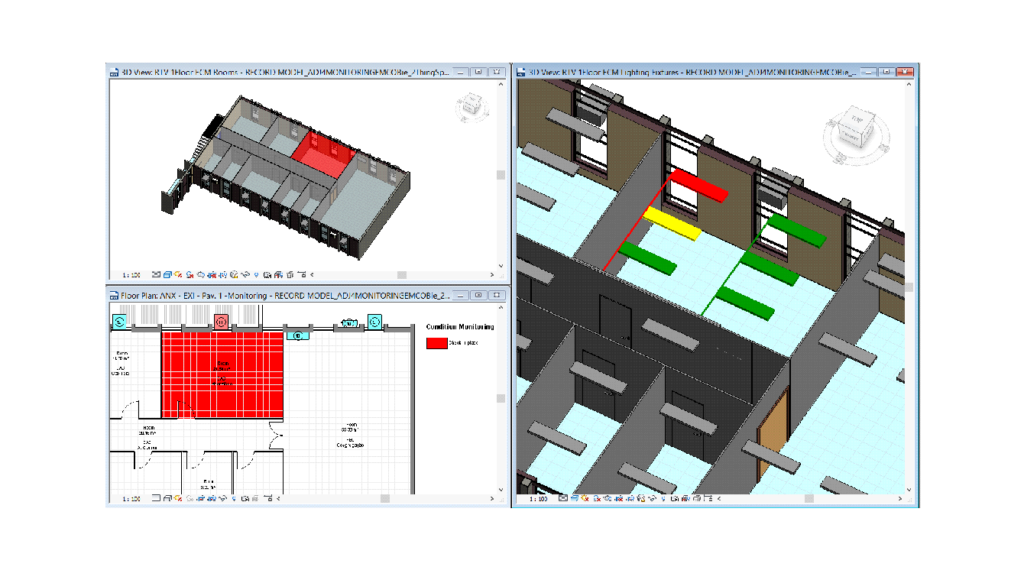The integration of BIM Management with Lean Project Management methodology represents a significant advancement in the construction industry, combining digital efficiency and best management practices. While BIM revolutionizes the way data is visualized, shared, and utilized throughout the lifecycle of a construction project, the Lean approach offers a set of principles and practices to maximize value and minimize waste. In this post, we will explore how the synergy between these two methodologies can enhance results in construction projects, promoting greater efficiency, quality, and collaboration.
What is the Lean Project Management Methodology?
The Lean Project Management Methodology, inspired by the Toyota production system, is an approach that aims to maximize value delivered to customers while minimizing waste of resources, time, and effort. It is based on principles such as identifying value from the customer’s perspective, mapping value streams to eliminate waste, seeking continuous improvement, and empowering teams to collaboratively solve problems. This methodology emphasizes the importance of efficiency, continuous improvement, and the elimination of activities that do not add value to the final product or service, thus promoting leaner and more effective project management.
What are the main characteristics of the Lean Project Management Methodology and how do they relate to BIM Management?
The Lean Project Management Methodology stands out for several key characteristics that align well with BIM Management:
Value Identification: Both approaches emphasize the importance of understanding value from the customer’s perspective. While Lean seeks to identify and deliver value by eliminating waste, BIM facilitates the visualization and communication of this value through detailed three-dimensional digital models.
Value Stream Mapping: Both Lean and BIM Management are concerned with optimizing workflow. While Lean maps and optimizes the value stream to reduce waste and bottlenecks, BIM provides a digital representation of the workflow, allowing for a more detailed analysis and identification of improvement opportunities.
Continuous Improvement: Both approaches value continuous improvement. While Lean promotes a mindset of continuous improvement through the gradual elimination of waste and problem-solving, BIM offers tools for performance analysis and simulation, facilitating the identification and implementation of improvements throughout the project lifecycle.
Team Collaboration and Engagement: Both Lean and BIM emphasize the importance of collaboration and team engagement. While Lean promotes collaborative problem-solving and the active participation of all involved parties, BIM facilitates collaboration by allowing all disciplines to work in a shared digital environment, facilitating information exchange and collaborative decision-making.

What are the Key Benefits of Integrating Lean Project Management Methodology with BIM?
The integration of Lean Project Management Methodology with BIM offers several significant benefits for projects in the construction industry:
Waste Reduction: Lean methodology aims to eliminate waste of time, resources, and materials. By integrating BIM, which provides a detailed and accurate view of the project, teams can identify and eliminate waste more efficiently, resulting in more effective resource utilization and overall cost reduction of the project.
Increased Operational Efficiency: The combination of Lean with BIM enables the optimization of operational processes, from planning to execution. This results in shorter construction cycles, better deadline management, and greater responsiveness to changes during the project.
Quality Improvement: The Lean approach prioritizes delivering value to the customer and striving for excellence in quality. With BIM, projects can be visualized and analyzed in detail before physical construction, allowing for early identification of potential issues and implementation of high-quality solutions.
Enhanced Collaboration and Communication: BIM facilitates collaboration among project teams by providing a shared digital environment for information exchange. By integrating Lean, which promotes a culture of collaboration and open communication, teams can work more integratedly and efficiently, reducing errors and conflicts.
Informed Decision Making: With BIM, teams have access to detailed data and information about the project in real time. By applying Lean principles of value analysis and continuous improvement, teams can make more informed and strategic decisions throughout the project lifecycle.
Increased Customer Satisfaction: By integrating Lean with BIM, teams can deliver high-quality projects within budget and on time, meeting customer expectations more effectively. This results in greater customer satisfaction and stronger long-term relationships.
My company uses Lean Methodology for Project Management, but wants to integrate it with BIM, what should I do?
There are several priorities to consider when making this integration. However, this varies depending on the type of service provided by the company.
Here, I will cite three different examples related to the Construction universe, namely: Elaboration of Projects of different disciplines, Works Management and Asset Management.
1. Company of Elaboration of Projects of Different Disciplines

For a company of Elaboration of Projects of Different Disciplines, when integrating Lean Management Methodology with BIM, the priorities to be considered, in my view, are as follows:
Standardization and Consistency of Modeling: Establish guidelines and standards for consistent BIM modeling across all disciplines, ensuring that all team members follow the same protocols and practices. This will facilitate integration and collaboration among different disciplines, allowing for more efficient information exchange and more accurate analysis of the model to identify improvement opportunities.
Workflow Management and Coordination: Develop integrated processes to manage workflow and coordinate activities across the various disciplines involved in the project. This may include implementing regular coordination meetings, using conflict detection tools, and defining clear responsibilities for each discipline, ensuring effective collaboration and smooth project execution.
Performance Analysis and Continuous Improvement: Implement systems to monitor project performance and identify areas of waste, inefficiency, or improvement opportunities. This may involve using performance metrics, analyzing BIM model data, and gathering feedback from the team to continuously evaluate project progress and implement adjustments as needed, ensuring a Lean approach to continuous improvement throughout the project lifecycle.
2. Company of Works Management

For a company of Works Management, when integrating Lean Management Methodology with BIM, the priorities to be considered, in my view, are as follows:
Lean Planning and Scheduling with BIM: Implement a Lean approach to planning and scheduling works, using BIM as a powerful tool to visualize project progress, identify potential bottlenecks, and optimize workflow. This involves creating a detailed project plan, setting goals and performance metrics, and using simulations and analyses of the BIM model to identify improvement opportunities in activity sequences and resource utilization.
Cost and Waste Management: Apply Lean principles to reduce costs and waste during project execution, using BIM to monitor progress, analyze material and resource usage, and identify potential waste areas. This includes implementing just-in-time inventory management practices, minimizing rework, and optimizing the layout of the construction site to maximize efficiency and reduce overall project costs.
Continuous Improvement and Organizational Learning: Establish an environment of continuous improvement and organizational learning, encouraging collaboration and knowledge sharing among project teams. This involves holding regular project review meetings, analyzing lessons learned, and implementing adjustments and improvements based on team feedback and BIM model data. Additionally, it is important to promote a culture of innovation and experimentation, where team members feel encouraged to propose and test new ideas to continuously improve performance and efficiency in works.
3. Company of Asset Management

For a company of Asset Management, when integrating Lean Management Methodology with BIM, the priorities to be considered, in my view, are as follows:
Data Standardization and Consistency: Establish standards and protocols for capturing, organizing, and managing asset data using BIM. This involves defining attributes and metadata needed to consistently describe assets, ensuring integrity and accuracy of information throughout the asset lifecycle. Data standardization is critical to ensuring interoperability between different systems and to facilitating efficient asset analysis and management.
Maintenance and Operation Optimization: Apply Lean principles to optimize asset maintenance and operation processes, using BIM as a tool to visualize and analyze asset performance over time. This involves implementing predictive and preventive maintenance practices, identifying usage and wear patterns of assets, and analyzing BIM model data to identify improvement opportunities in operational efficiency and cost management.
Change Management and Continuous Improvement: Establish processes and systems to manage changes to assets over time and promote continuous improvement in performance and efficiency. This includes implementing a robust change management system, conducting periodic performance analyses of assets, and implementing adjustments and improvements based on data and feedback obtained from the BIM model and asset users. Promoting a culture of continuous improvement is essential to ensuring that assets meet the evolving needs of the organization and end users.
Maximizing Projects: BIM and Lean in Harmony
In conclusion, the integration of BIM Management with Lean Project Management Methodology represents a powerful alliance in the construction industry, capable of driving efficiency, quality, and collaboration in projects of all scales. By adopting an approach that combines the advantages of BIM in data visualization and communication with Lean principles of waste elimination and continuous improvement, teams can achieve exceptional results.
This synergy not only optimizes the construction process, but also promotes more agile, sustainable, and value-oriented delivery, meeting customer demands and driving industry progress towards a more efficient and innovative future. By embracing this integration, companies are positioned to stand out in a competitive market, while contributing to the advancement of civil construction towards more effective and sustainable practices.




Deixe um comentário